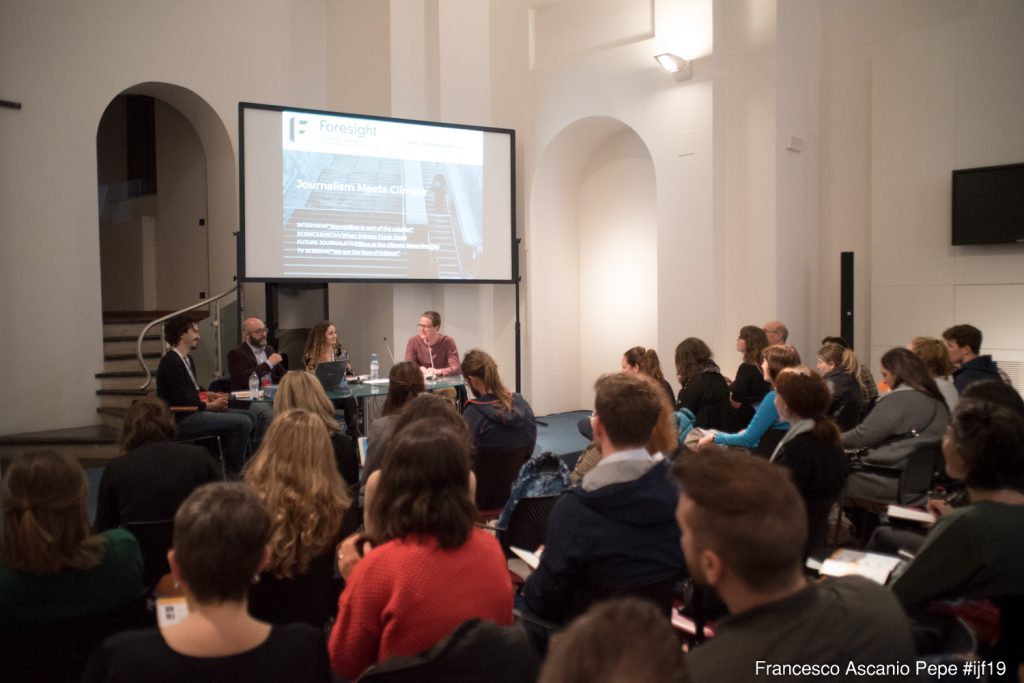Stay up to date by subscribing to our Newsletter or by following our Telegram channel, and join the conversation on Facebook, Twitter, and Instagram.
Edited by Marco Nurra
Watch all #ijf19 sessions on-demand: media.journalismfestival.com
Guardian climate pledge 2019. “Today the Guardian is making a pledge to our readers that we will play our part, both in our journalism and in our own organisation, to address the climate emergency.” The six Guardian language changes on climate matters.
How The Guardian is rethinking the images it uses for its climate journalism: fewer polar bears, more people. “We know, from years of experience, that people love polar bears and pandas, so it is easy to see how these appealing creatures have become the emblems for the topics of endangered species and what we previously termed as global warming. […] These images tell a certain story about the climate crisis but can seem remote and abstract – a problem that is not a human one, nor one that is particularly urgent. So it made sense when we heard that research conducted by the team at Climate Visuals has shown that people respond to human pictures and stories. Images that show emotion and pictures of real situations make the story relevant to the individual,” explains Guardian picture editor Fiona Shields.
Sandy Hook father awarded $450,000 after suing conspiracy theorist. The father of a boy killed in the 2012 Sandy Hook school shooting has been awarded $450,000 by a jury in Wisconsin after he sued a conspiracy theorist who claimed the massacre never happened.
Verifying online information: The absolute essentials. The second in a new series of guides from First Draft looks at the tools, tips and techniques for figuring out if online materials is what it purports to be.
Covering extremism in the digital era. Journalists have always had to grapple with how to cover extremists and hate-filled ideologies. But in today’s digital world, and with experts warning about the threat of white supremacy and far-right extremism, journalists are taking a new look at how to cover such stories.
Two years of impunity for the murder of Daphne Caruana Galizia. Approaching the second anniversary of the murder, we are no closer to uncovering the truth about the murder and all those involved.
Malta’s police ‘may have turned down evidence’ in journalist’s murder. European rapporteur raises concerns about alleged failings in Daphne Caruana Galizia case.
The journalist vs. the President, with life on the line. Maria Ressa, editor of a popular news site in the Philippines, has incurred President Duterte and his supporters’ wrath by investigating his extrajudicial killing campaign.
Doxxed journalist reveals perils of working in Hungary’s hostile media environment. Much of Hungary’s media over the last decade has, in plain sight, slipped under the yoke of the state. “It’s fascinating how this could be pulled off by a supposedly democratic EU country,” muses András Petho, co-founder of the independent Budapest-based website Direkt36.
Without encryption, we will lose all privacy. This is our new battleground. “The US, UK and Australia are taking on Facebook in a bid to undermine the only method that protects our personal information,” writes Edward Snowden.
How to report on a data breach. We’re digitizing information at increasing, seemingly unstoppable speeds, and that we seem hellbent on putting everything on the internet, it’s a safe bet that such hacks won’t stop. That’s why it’s important for journalists at all publications and on all beats—not just tech reporters—to understand how to write about data breaches.
International news publishers frustrated with UK Brexit coverage as audiences demand better information. Reporters from Le Monde, the New York Times and Die Welt discuss why it is hard to satisfy global readers’ hunger for quality reporting on the UK’s withdrawal from the EU.
The International Journalism Festival #ijf19 On-Demand
Every week, one recommendation from the extensive programme of the last edition of the International Journalism Festival.

Today we are inviting you to watch “Don’t think of a polar bear: media, news and the future of climate change“. It is here and now. The climate is changing and is changing for everybody: for the environment, for economics, for the people. The political debate, even when someone denies it, cannot avoid dealing with climate-related issues. Because the climate is changing everywhere, in diverse ways, with diverse consequences for diverse sectors and regions. It is part of our everyday life. The media ecosystem is facing a big challenge that requires journalists to hold together many different issues in the same story: to be compelling for people, to maintain the reliability of the scientific information, to find the right frame to tell how such a complicated issue is relevant in public opinion.

